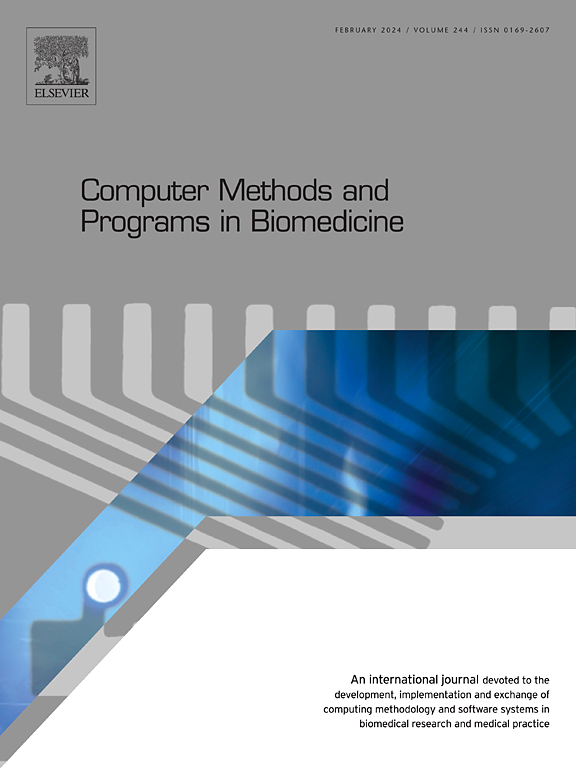ADEPT:用于临床数据洞察的先进数据探索和处理工具
IF 4.9
2区 医学
Q1 COMPUTER SCIENCE, INTERDISCIPLINARY APPLICATIONS
引用次数: 0
摘要
背景和目的临床数据的快速增长为医学专业人员的分析和解释带来了挑战。为了解决这些问题,我们开发了高级数据探索和处理工具(ADEPT),集成了数据预处理、建模、可视化和统计报告,以解决术语不准确、异常值和缺失值等常见问题。方法sadept采用了先进的预处理方法,包括标准化数值,通过隔离森林和DBSCAN检测异常值,并用KNN和MissForest填充缺失数据。通过基于关键字的分类和K-means聚类处理标记化的文本特征。将梯度增强机、随机森林、极端梯度增强、逻辑回归和支持向量机五种机器学习模型与动态投票机制相结合。使用精确性、敏感性和特异性评估性能。结果sadept表现出明显的性能改善,曲线下面积(AUC)增加了14%以上。主要结果包括提高了精度、灵敏度和特异性,验证了该工具从复杂数据集中提取有价值见解的能力。结论sadept将严格的预处理与先进的建模相结合,为临床数据自动化分析提供了全面的解决方案。其动态投票机制和集成工具提高了准确性和可解释性,解决了临床数据管理和决策中的关键挑战。本文章由计算机程序翻译,如有差异,请以英文原文为准。
ADEPT: An advanced data exploration and processing tool for clinical data insights
Background and objective
The rapid growth of clinical data creates challenges in analysis and interpretation for medical professionals. To address these issues, we developed the Advanced Data Exploration and Processing Tool (ADEPT), integrating data preprocessing, modeling, visualization, and statistical reporting to resolve common problems like inaccurate terminology, outliers, and missing values.
Methods
ADEPT incorporates advanced preprocessing, including standardizing numerical values, detecting outliers via Isolation Forest and DBSCAN, and filling missing data with KNN and MissForest. Tokenized text features are processed through keyword-based classification and K-means clustering. Five machine learning models—Gradient Boosting Machine, Random Forest, Extreme Gradient Boosting, Logistic Regression, and Support Vector Machine—are combined with a dynamic voting mechanism. Performance was assessed using precision, sensitivity, and specificity.
Results
ADEPT demonstrated substantial performance improvements, with the Area Under the Curve (AUC) increasing by over 14 %. Key results include enhanced precision, sensitivity, and specificity, validating the tool's ability to extract valuable insights from complex datasets.
Conclusions
ADEPT offers a comprehensive solution for automated clinical data analysis, combining rigorous preprocessing with advanced modeling. Its dynamic voting mechanism and integrated tools enhance accuracy and interpretability, addressing critical challenges in clinical data management and decision-making.
求助全文
通过发布文献求助,成功后即可免费获取论文全文。
去求助
来源期刊

Computer methods and programs in biomedicine
工程技术-工程:生物医学
CiteScore
12.30
自引率
6.60%
发文量
601
审稿时长
135 days
期刊介绍:
To encourage the development of formal computing methods, and their application in biomedical research and medical practice, by illustration of fundamental principles in biomedical informatics research; to stimulate basic research into application software design; to report the state of research of biomedical information processing projects; to report new computer methodologies applied in biomedical areas; the eventual distribution of demonstrable software to avoid duplication of effort; to provide a forum for discussion and improvement of existing software; to optimize contact between national organizations and regional user groups by promoting an international exchange of information on formal methods, standards and software in biomedicine.
Computer Methods and Programs in Biomedicine covers computing methodology and software systems derived from computing science for implementation in all aspects of biomedical research and medical practice. It is designed to serve: biochemists; biologists; geneticists; immunologists; neuroscientists; pharmacologists; toxicologists; clinicians; epidemiologists; psychiatrists; psychologists; cardiologists; chemists; (radio)physicists; computer scientists; programmers and systems analysts; biomedical, clinical, electrical and other engineers; teachers of medical informatics and users of educational software.
 求助内容:
求助内容: 应助结果提醒方式:
应助结果提醒方式:


